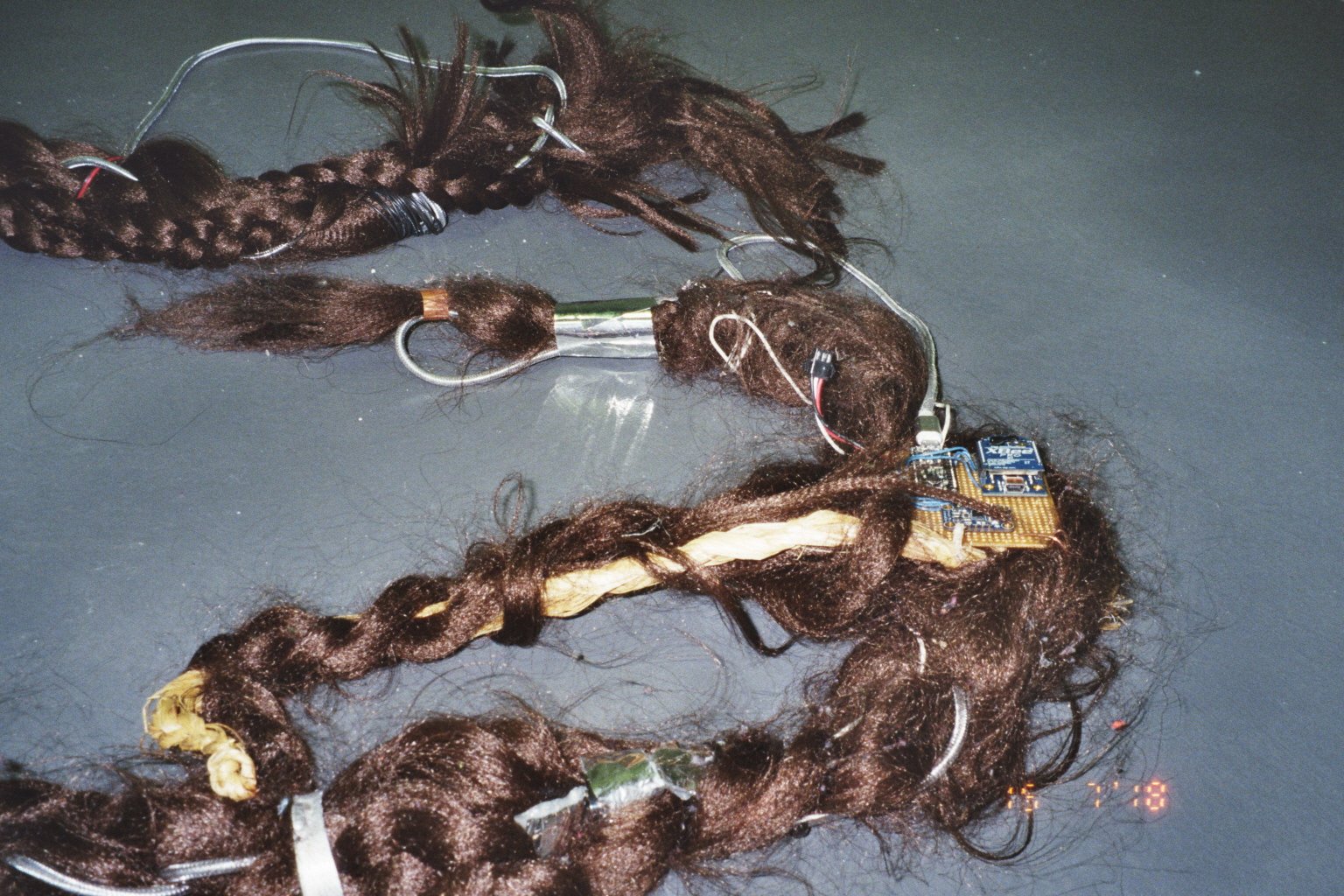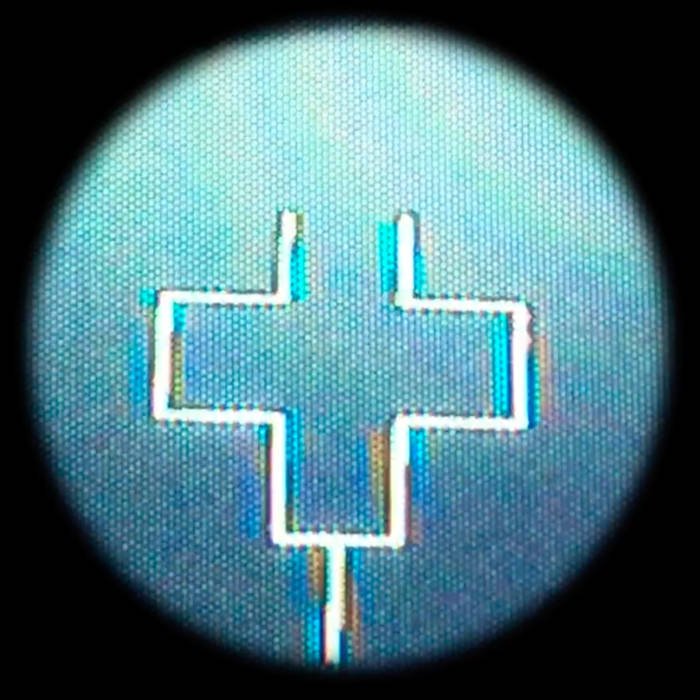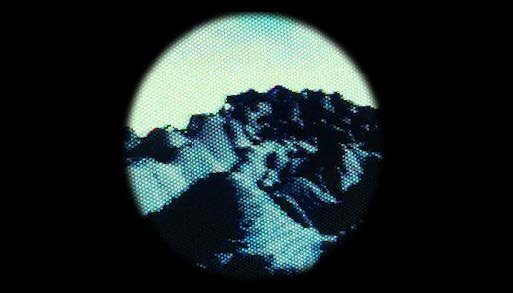Listener, 2018
“This is where Listener begins: with a wanderer Listening, an Oglala woman, equipped with Listening devices, which are passed down from woman to woman. Alone, her devices work in ways she cannot quite understand, they seem to listen farther than technologically possible, beyond time and place. She has a suspicion that she is receiving scrambled transmissions from a good place, but a Far Place. She feels they Listen back.”
Focusing on developing relationships with the computer as a nonhuman entity, Listener is an iterative, site-specific performance artwork which speculates a future through Lakota ontology, narratively and physically manifesting a relationship with metals in electronics, performed via an electronic interface woven into hair (hair is sacred to the Lakota). The sonic landscape includes live police scanners, synthesizers played by the hair, and algorithmically re-arranging poetry with a voice speaking of a future landscape, prophecies, dreams, rumors, and the possibilities in listening. This composition is constructed in a sonic and physical spiral. A projection of growing geometric design, constructed from Lakȟóta womens’ quillwork shapes, acts as a compass for the performer. The artist watches the compass, moves the hair, which effects the synthesizer, the Machine Learning algorithm listens to the synthesizer and decides how to move the compass, and the spiral continues. The future is dangerous, but as my grandfather says, spirits and ancestors are just there on the other side, trying to help. It is our responsibility to listen.
Listener, Performance, Kite, 2018. 15-28 minutes.
Includes floor projections, audio channels, Hair-Braid interface.
15-28 Minutes, has been staged with one project and installed TVs, one projector pointed at the floor, or with 3 floor pointed projectors onto custom screens with 3 isolated audio channels.
Four meters of hair are laid out in a spiral, in this performance, the artist slowly winds into the center, whispering into an earpiece. The spoken voice is algorithmically scrambled, making it torturous to continue reciting as the poetry is forming and reforming.
‘L-Sys’ (Lakota System), Kite, 2018.
This growing and changing shape is projected during performance, constructed from shapes traditionally only used and created by Lakota women. The movement and growth of this projection is decided by the computer.
Interface
This four meter braid is woven with rare earth metals, sound electronics, sacred plants such as sweetgrass and sage, and an accelerometer/radio transmitter package. Imagining Lakota epistemologies in the future, this braid considers that hair is a sacred, extra-sensory part of the body, making it the logical non-human sonic appendage.
This animation accompanies the performance and is created at each performance location. It is a 3D rendering of the area surrounding the performance, rendered as an exploration of the digital space. The 3D model is built from United States Geological Survey data, reflecting the deeply colonial ties of mapping the land to data and computer vision.
Associated Artworks
Listener, Performance, Kite, 2018. 15-28 minutes.
Includes floor projections, audio channels, Hair-Braid interface. Adaptable for any space or online. This work has been staged with one project and installed TVs, one projector pointed at the floor, or with 3 floor pointed projectors onto custom screens with 3 isolated audio channels.
‘L-Sys’ (Lakota System). Video and audio recording. https://vimeo.com/281906974. 17 minutes 26 seconds. Projection from Listener. Screening/Installation.
Documentation of a live performance of Listener, site-specific to Ottawa, Ontario. There are 3 video feeds during the performance, this is the main video feed which shows the machine learning algorithm at work.
Hair-Braid Interface, Kite, 2018. Image
Listener, Cloak, costuming, Kite, 2018.
Listener, Script/Poetry, Kite, 2018.
Installation Version
Low-Fi version for CRT TVs and printed posters. This version is intended for Indigenous, especially Lakota, audiences where the poetry is available for the public.
Screen and Floor projections. Three videos as bubbles on a large screen.
Three convex circles on the floor with projection mapping.
Multi-channel audio installation: 1-4 isolated speaker set ups. In a low tech situation this is routed through locally acquired CRT TVs.
Long cut video installation for cathode-ray tube television.
One channel screening version





